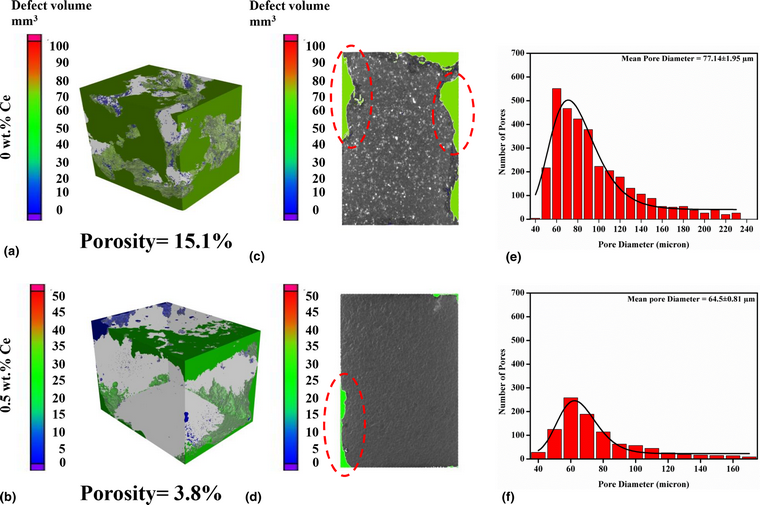Article contents
Effects of cerium addition on the corrosion resistance and biocompatibility of Mg–2Sr–1Zr Alloy
Published online by Cambridge University Press: 21 September 2020
Abstract

There is a significant interest in developing the corrosion-resistant magnesium (Mg) alloy as a degradable biomaterial. In this work, the magnesium–zirconium (Zr = 1 wt%)–strontium (Sr = 2 wt%)–cerium (Ce = 0, 0.5 wt%) alloy was developed using the casting process. Effects of Ce addition on alloy microstructure, corrosion behavior, and biocompatibility were systematically investigated. Detailed microstructural analysis indicated that 0.5 wt% Ce addition refined the second phase (Mg17Sr2) in the Mg–2Sr–1Zr alloy. Furthermore, phase analysis of corrosion product showed the formation of stable CeO2 oxide layer on the corroded surface of the Mg alloy. Both the precipitate refinement and stable CeO2 layer formation significantly contributed toward enhanced corrosion resistance of the Mg–Sr–Zr–Ce alloy, as determined by both electrochemical and immersion corrosion in phosphate-buffered saline. Significantly higher osteoblast-like cell (MG-63) proliferation was observed in Ce-containing Mg alloy at both day 1 and day 3. Overall, the results showed that Ce addition could modulate degradation behavior and biocompatibility of the ternary Mg alloy.
- Type
- Article
- Information
- Copyright
- Copyright © The Author(s), 2020, published on behalf of Materials Research Society by Cambridge University Press
References
- 6
- Cited by





